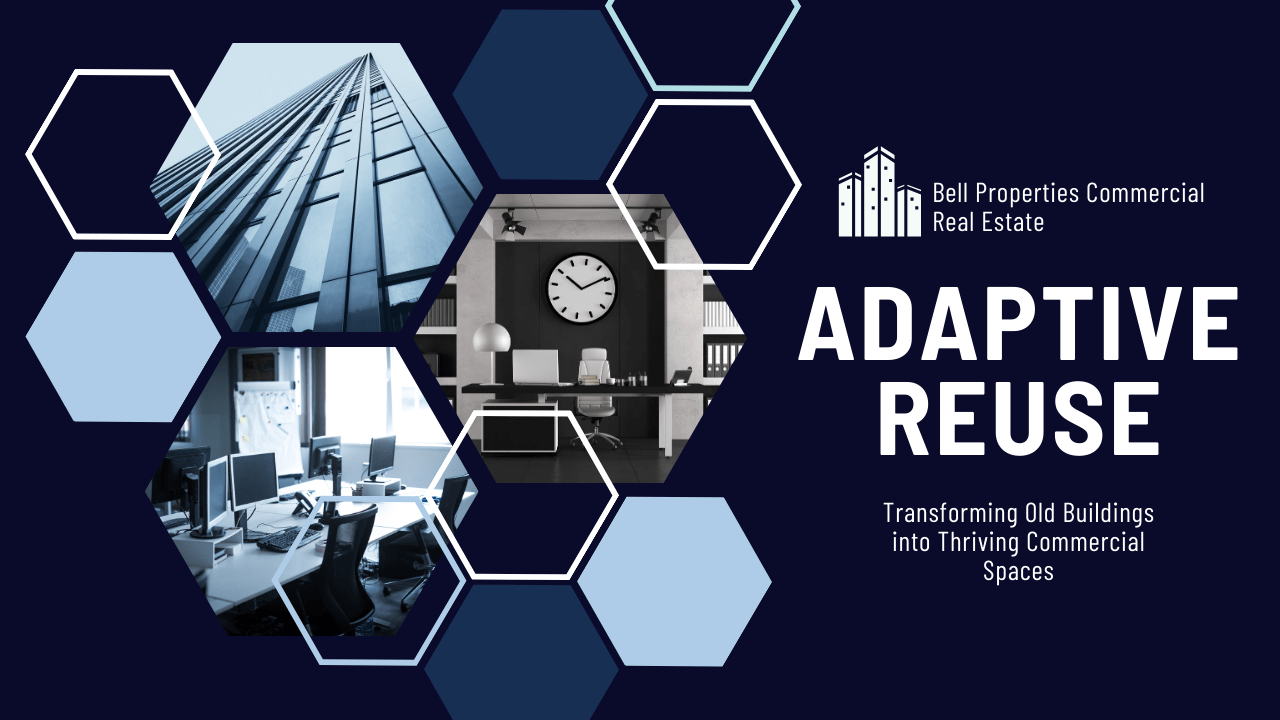We love the idea of taking old, abandoned, and unused buildings and turning them into thriving commercial spaces. If you’re not familiar with this concept, it’s called adaptive reuse, and it’s getting the attention of developers and commercial property investors across the country. As commercial property managers in California, we believe our market is especially ideal for transforming older buildings into something beautiful, useful, and profitable.
Understanding Adaptive Reuse

Adaptive reuse is the name of a unique real-estate strategy which advocates for repurposing an old building and using that space for a completely different function. Rather than tearing down the entire building and starting a new structure from scratch, builders work to keep the infrastructure intact and overhaul the interior. The design and layout will depend on what the building’s new purpose will be. Old buildings can retain their strong foundation, durable frames, and effective infrastructure all while being remodeled into something new. An abandoned warehouse, for example, might become a modern apartment complex. Or, an old church can be turned into a museum or a school.
This is especially relevant to the commercial real estate market because commercial buildings are most likely to be forgotten and empty. They have the most potential, therefore, as an adaptive reuse. In California, you might find abandoned offices in prime locations. These spaces are still in good shape, and they can play a major role in revitalizing forgotten areas of the city.
State, local, and even the federal government owns a lot of property that’s not being used. Real estate developers and commercial property investors can put these spaces to good use, generating profit and serving the community.
Factories, warehouses, storage facilities, even hospitals and schools have been left abandoned and unused, but they don’t need to stay that way. They also do not need to be destroyed when there’s still so much that can be done with them.
If you’re a commercial property investor in California, you’re likely seeing the potential in adaptive reuse strategies.
How Does Adaptive Reuse Serve the California Commercial Market?

How does repurposing old architecture seem like a better alternative to demolishing old buildings? There are specific market trends, especially in places like California that are driving the popularity of adaptive reuse.
Let’s look at some of the most important trends and developments that have inspired so much growth in the movement and how it impacts commercial real estate.
Focus on Sustainable Ventures and Less Waste
We have seen a growing importance placed on acting with more of a green agenda. There’s a huge emphasis on sustainable living and environmental stewardship. This trend has driven adaptive reuse in the commercial property market because there’s less of a tolerance for waste. As perceptions shift, the idea of new construction projects taking over cities is a bit much for some people to stomach. They’d rather recycle and reuse, and that’s exactly what this strategy does. People in California are increasingly concerned with energy efficiency systems, conserving natural resources, repurposing household items, and minimizing waste.
Why demolish something when you can recycle it? This is how the thinking goes. With adaptive reuse, there are fewer materials being used and a lower waste of resources. As your commercial property manager in California, we can help you turn an existing space into an attractive new commercial rental space, adding sustainable features to the existing infrastructure.
Remote Work Has Changed Demand
The rise of remote work has caused a ripple through the commercial real estate market in California, and adaptive reuse is one of the ways to counter any of the setbacks that may have occurred. With the workforce growing ever more remote, there has to be a new way to think about offices and work spaces. While some companies are completely remote, others have a hybrid model where employees are coming and going. These businesses now face a growing need for commercial building space.
The commercial space they need is a little different than what their traditional office space or retail space may have looked like, however. Commercial property owners need to be flexible and adaptable. This sudden increase in demand can drive up rental rates and property values, which makes other sorts of investment properties a better idea. We’re talking about co-working spaces in which multiple tenants split the rent and have shorter leases. Mixed use developments are also in higher demand.
This market trend has led to a new demand: upcycled office spaces to accommodate growing and diverse businesses. Now is the time to buy those underutilized urban buildings. Why not renovate them into co-working properties and give them a new purpose. You’ll easily find tenants.
Technology and Adaptive Reuse
Property management technology is always evolving, and the advancements in the commercial property management sector have been especially swift and attention-grabbing. We’re now buying and selling properties virtually. Our property management systems are automated and transparent. We’re using the Internet of Things (IoT) and Artificial Intelligence (AI) to manage better and more efficiently. Property management technology has brought new levels of efficiency and accessibility to the market, allowing people to pursue more investments that they never would have in the past. Investments such as abandoned commercial properties.
Application programming interfaces powered by AI provide insights and analytics to California commercial property managers that we were not able to access previously. This data is shared with our real estate investors, and together we can identify opportunities that we would not have considered a decade ago. It’s easier than ever to observe local market conditions, follow the shift in tenant demands, and measure the performance of properties in your existing portfolio. There’s less risk and fraud and more accountability and transparency. It makes taking a chance on an abandoned property all the easier. Not only is it easy to find these properties, it’s easy to make an offer and close the deal.
California Commercial Property Management: Benefits of Adaptive Reuse

Transforming older commercial properties has a number of benefits to you, as an investor in commercial real estate, and it also benefits the community as a whole.
There’s less pollution, for starters. This is an eco-friendly alternative to demolishing buildings. Tearing down a building not only creates waste, it also unleashes pollution and particles into the air. California is known for its air quality issues, so saving on the dust and the drama is definitely a good thing.
Older buildings might have lead, asbestos, and even mercury. When you buy and reinvest in a property like this, you can avoid releasing the substances into the air. Demolition and disposal is rarely clean or green, and by turning the old structures into modern buildings that have a higher standard for health and safety, you’re doing a service to the community.
Another benefit to adaptive reuse is that it saves time and money. You’ll have your rental space up and running a lot faster when you buy and repurpose an existing building than if you wait for it to be demolished before you can begin building from the ground up. You may have noticed that a lot of contractors in the city have a backlog of work, too. How long are you willing to wait on renovations? When you already have a sturdy building as a starting point, there’s less to do.
Repurposing old commercial buildings can be a challenge, especially for investors who are accustomed to working with all things new. However, this is an undertaking that’s still easier and more cost-effective than building a new structure from square one. Most investors find that older architecture consists of stronger materials that provide a solid and reliable foundation for adaptive reuse projects. These buildings are stronger.
Property Values and Adaptive Reuse in California
 We cannot predict what kind of property value will emerge from an older building that has been transformed into something new. It will depend on what you create with the space, and who you attract as tenants. We can tell you that adaptive reuse projects are likely to have high appraisal values because of the history of the buildings and stability of those surrounding neighborhoods.
We cannot predict what kind of property value will emerge from an older building that has been transformed into something new. It will depend on what you create with the space, and who you attract as tenants. We can tell you that adaptive reuse projects are likely to have high appraisal values because of the history of the buildings and stability of those surrounding neighborhoods.
Location is always the most important factor in any real estate transaction. When we’re estimating the value of your commercial real estate, we’re going to start there. Adaptive reuse projects often have desirable locations.
There’s also going to be high tenant demand. Nothing increases value like tenants competing to rent your space. Adaptive reuse can be counted on to increase property values by providing new and modern amenities, technology, and community-building opportunities.
This is a concept that is taking hold in a lot of cities across America who aim to preserve their history while also modernizing fixtures and features. Instead of bulldozing the older and abandoned commercial spaces around California, commercial real estate investors are needed to transform them. Let’s talk about how renovating these spaces might serve your investment goals. Contact us at Bell Properties Commercial Real Estate.



